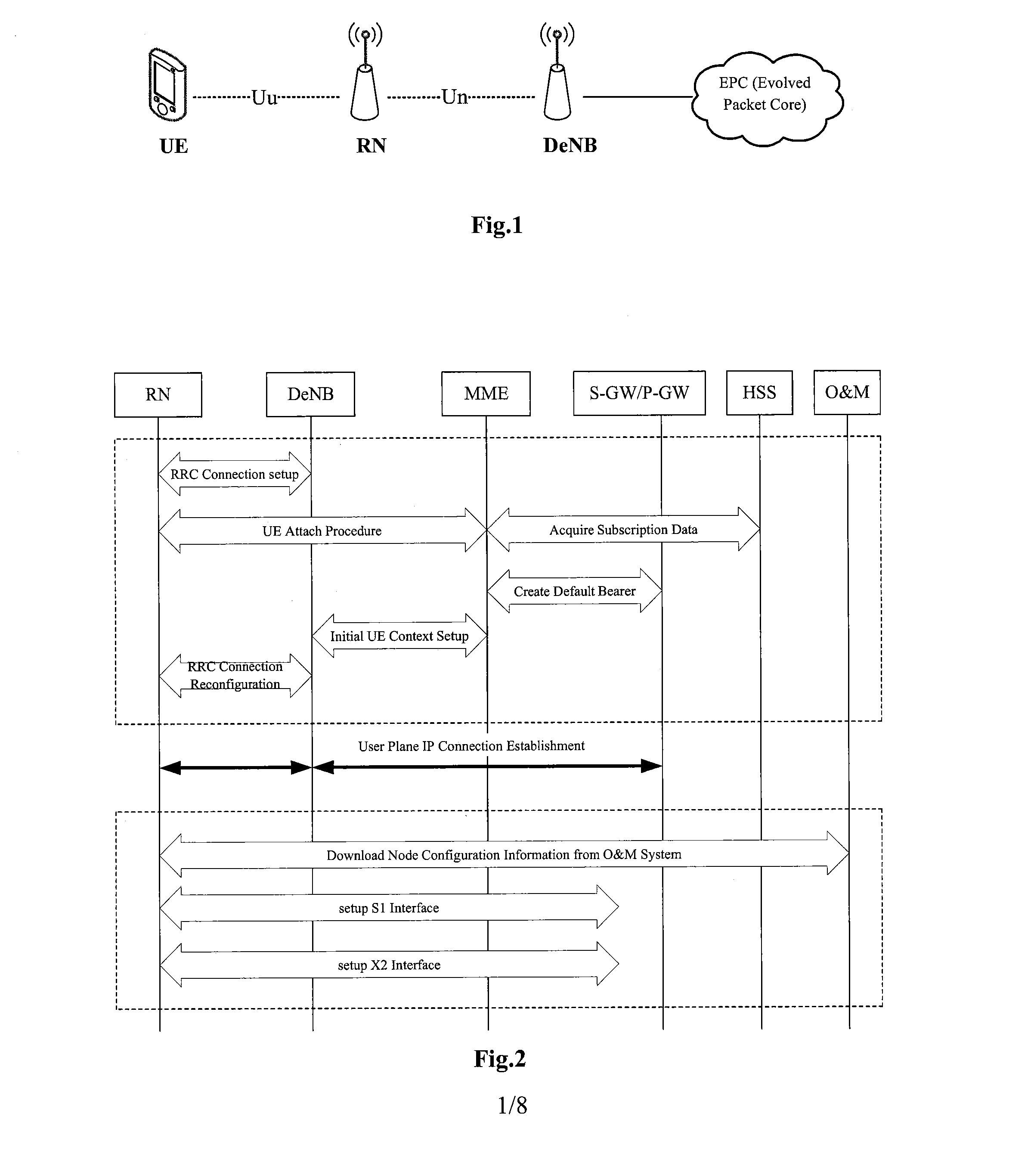Method, device and system for selecting service cell
a service cell and cell selection technology, applied in the field of wireless communication technology, can solve the problems of undoubtedly increasing the network deployment cost, obtaining limited services, and the cell selection mechanism of a ue is not exactly applicable to an rn, and achieve the effect of enhancing the controllability of a donor cell
- Summary
- Abstract
- Description
- Claims
- Application Information
AI Technical Summary
Benefits of technology
Problems solved by technology
Method used
Image
Examples
embodiment i
[0066]After the RN has attached to the network successfully, the O&M system downloads the donor cell configuration information to the RN, which includes donor cell related information for the RN; and then the RN determines, based on the downloaded donor cell configuration information, whether the currently serving cell is a donor cell indicated in the donor cell configuration information. If yes, the RN may continue to work in the cell; otherwise, the RN accesses to another donor cell indicated in the donor cell configuration information via cell reselection (or selection, the same hereinbelow) procedure. Wherein, the initial network attachment of the RN can be realized based on the existing attachment procedure of a UE.
[0067]As shown in FIG. 9, embodiment I is based on the candidate architectures 1 and 3 of 3GPP, which can comprise:
[0068]Step 501: RRC connection is established between the RN and the DeNB.
[0069]Step 502: the RN sends attach request to the MME serving the RN.
[0070]St...
embodiment ii
[0091]After the RN has attached to the network successfully, the O&M system downloads the donor cell configuration information to the RN, which includes the donor cell related information for the RN; and then the RN determines, based on the downloaded donor cell configuration information, whether the currently connected cell is the donor cell indicated in the donor cell configuration information, if yes, the RN may continue working in the cell; otherwise, the RN selects another donor cell indicated in the donor cell configuration information via inter-cell handover procedure. Wherein, the initial network attachment of the RN can be realized by reference to the existing network attachment of a UE.
[0092]As shown in FIG. 7, embodiment II is based on candidate relay architectures 1 and 3 in 3GPP, which can comprise:
[0093]Step 701-706: the RN attaches to the network to establish the basic IP connection. The flow is similar to the corresponding steps as shown in FIG. 5 and is not describe...
embodiment iii
[0112]After the RN attaches to the network successfully, the O&M system downloads the donor cell configuration information to the RN, which includes the donor cell related information for the RN; and then the RN determines, based on the downloaded donor cell configuration information, whether the current serving cell is the donor cell indicated in the donor cell configuration information, if yes, the RN may continue working in the cell; otherwise, the RN accesses to a donor cell indicated in the donor cell configuration information via cell reselection procedure. Wherein, the initial network attachment of the RN can be realized by reusing the existing UE attachment.
[0113]As shown in FIG. 9, embodiment III is based on the candidate relay architecture candidates 1 and 3 in 3GPP, which can comprise:
[0114]Step 901˜906: the RN attaches to the network to establish the basic IP connection. The flow is similar to the corresponding steps as shown in FIG. 5 and is not described hereinbelow.
[0...
PUM
 Login to View More
Login to View More Abstract
Description
Claims
Application Information
 Login to View More
Login to View More - R&D
- Intellectual Property
- Life Sciences
- Materials
- Tech Scout
- Unparalleled Data Quality
- Higher Quality Content
- 60% Fewer Hallucinations
Browse by: Latest US Patents, China's latest patents, Technical Efficacy Thesaurus, Application Domain, Technology Topic, Popular Technical Reports.
© 2025 PatSnap. All rights reserved.Legal|Privacy policy|Modern Slavery Act Transparency Statement|Sitemap|About US| Contact US: help@patsnap.com



